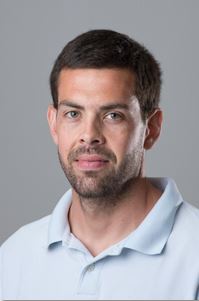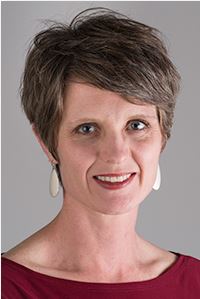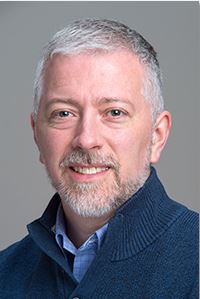|

Charles Lavin
|
|

Rhonda Petree
|
|

Sam Herrington
|
My grandfather explained to me why he loves chocolate so much.
When he was a small boy in Japan, the American soldiers would give
children chocolate. Last summer when I went home, I brought him American
chocolate and he cried a little. I didn’t understand why he cried until
I interviewed him and he told me about his childhood.
This excerpt was written by a student who completed an oral
history project that is currently part of an advanced academic writing
course in the English Language Transition (ELT) Program at the
University of Wisconsin-River Falls (UWRF). For this project, students
conduct two interviews: one face-to-face interview with a senior citizen
here in the United States and one telephone or video call interview
with a grandparent, older relative, or other older adult from students’
home countries. The ELT Program at UWRF has established relationships
with two senior living centers in our community who are happy to meet
with our students.
Students ask both interviewees questions about social,
cultural, historical, political, or economic events they have lived
through; technological changes they have experienced; and aspects of
their personal lives, including their early childhood memories,
marriages, and careers. Students then write summaries of these
interviews, create timelines to compare interviewees’ lives and place
them in their historical contexts, create presentations, and share their
work in a group presentation setting. This project was designed to give
students opportunities to engage in focused and meaningful conversation
with older adults, develop the academic skill of conducting primary
research, reach out to community members beyond campus, and creatively
express their findings.
Because of the complex nature of the project, advanced planning
and coordination among instructors are crucial. In this article, we
describe the steps we have followed and illustrate how our project
incorporates meaningful primary research into an advanced ESL writing
course.
Phase One: Laying the Groundwork
Instructors have some behind-the-scenes logistical tasks to
complete, some of which may need to be undertaken before introducing
students to the project. They must do the following:
- Contact administrators at a senior citizen housing facility
in the community to make arrangements to meet with their residents.
- Arrange for a demonstration of the chosen presentation software.
- Reserve a space for the presentations.
Phase Two: Orienting Students
In this phase, students begin thinking about older adults and
learning about oral history. Instructors lead discussion and writing
exercises and provide samples of oral history projects.
- Instructors lead students through guided discussions about
how older adults are regarded and treated in their cultures. Following
these discussions, students write about their experiences with and
perceptions of older adults. The writing can be in the form of a story, a
short essay, a poem, or a freewrite. The idea is to have the students
capture their thoughts on paper after the discussions. The instructors
read the writing pieces, but they do not mark or grade them.
- Instructors describe the project to students by showing
sample projects from previous years and providing a list of due dates
for the various steps in the project. New instructors can refer to
various iterations of oral history projects accessible on the Internet
to become oriented with the genre of oral histories. Depending on
students’ proficiency levels and the amount of time allocated to this
unit, the depth and length of the final product can be modified to fit
the students’ needs.
Phase Three: Preparing for Interviews
In this phase, students develop their interview questions and practice interviewing.
- Students create a list of questions they would like ask their
interviewees by drawing from the discussions and writing in phase one
or by adapting them from sample questions provided by the instructors.
For instance, both the Tell Me Your
Stories website and the T. Harry Williams Center for
Oral History website have useful sample interview questions.
Although the students will interview their non-English-speaking
relatives in their first languages, instructors encourage the students
to ask each interviewee similar questions.
- Instructors teach the necessary pragmalinguistic skills
related to politely asking people to clarify, repeat, or slow down,
providing students with a list of useful phrases and expressions for
each situation (e.g., I’m sorry, Do you
mind . . . , Could you please . .
.).
- Students practice by interviewing their classmates; they
should be encouraged to use open-ended rather than closed questions.
These mock interviews can be useful for preparing appropriate follow-up
questions (e.g., How did you feel about that/when . . . ?).
Phase Four: Conducting the Interview
In this phase, the instructors make final arrangements for
transporting students to the senior housing centers and the students
interview their person from their home countries.
- Students either interview the residents in a communal room or
break into small groups to interview a resident or couple in their
apartment. Students are encouraged to take notes in English, but
allowing note-taking in their first language is a reasonable option.
- Instructors should ensure that students ask interviewees’
permission to record the interview. Our students have encountered few
objections to using their phones to record the interview. In fact,
students usually take photos with their interviewees and incorporate
them into their final projects.
- Students are also responsible for interviewing the elderly
person of their choice from their home countries at this stage in the
project.
Phase Five: Summarizing, Synthesizing, and Preparing the Presentation
After the interviews are complete, students engage in the writing and research aspects of the project.
- Students write 500-word summaries of their interviews and
submit them to the instructor for feedback and a grade. Considering the
lexicon and grammar needed for writing an interview summary, the rubric
that we use includes a separate category for transition words and
phrases and cohesion. Summarizing an interview lends itself to the use
of quotations and paraphrasing, which necessitates using indirect speech
and reporting verbs.
- Students conduct additional library research so they can
incorporate important political, social, cultural, and technological
events into their timeline, thus situating the interviewees’ lives in a
larger context.
- Students create a timeline of important events in their
interviewees’ lives. In the past, instructors have had students create
posters to present their work, but software such as Prezi allows for a
more dynamic presentation. Students often incorporate pictures they take
during the interviews or that their family has sent them as well as
images found on the Internet.
Phase Six: Presenting the Oral History Project
In the final phase, students share their stories with their classmates and the campus community.
- On the day of the presentations, students set up their
posters or laptops and stand next to them. Several students present
simultaneously at presentation stations organized around the
room.
- Attendees circulate at will to the various stations to listen
to the presentations. This roving audience includes students' ESL
classmates, TESOL graduate and undergraduate students, other faculty and
staff, and invited guests.
Students’ final projects are evaluated on the quality of
writing in the written summaries, the thoroughness of research, and the
creativity and quality of the presentation. Prior to submitting final
drafts of their projects, students engage in peer review and meet with
their instructor for a one-on-one conference. The final project is worth
100 points and the rubric is broken down as follows: visual
presentation (30 points), content (20 points), grammar (20 points),
formatting (10 points), organization (10 points), vocabulary (5 points),
and mechanics (5 points). We follow this same process approach to the
other writing assignments in this class and see that most students
develop into strong, skilled, and confident writers.
Final Reflections
Every semester we discover new ways to enhance the quality and
improve the organization of the project. For example, we have learned
that it is better to assign this project in the middle of the semester
because students tend to be more creative and produce higher quality
work if they are not working on other final projects or preparing to
leave the country. We also need to allow for flexibility and look for
learning opportunities if the students’ interviewees are not in a
similar age range. Ideally, both interviewees are within about a decade
of each other, but if they are not, instructors should have the students
focus on relevant life events and identify themes or causes and effects
in their timelines. Other possibilities would be to allow students to
interview a family friend or a person living in the United States who is
originally from the student’s home country.
Overall, we have found that the real value of doing this
project goes beyond the content of this unit. This type
of
intergenerational and cross-cultural
partnership certainly seems to be mutually beneficial for all those
involved, which is evident in the positive and enthusiastic feedback we
receive from the senior housing center administrators and the
interviewees themselves. According to their feedback, our students have
enjoyed the interaction that this project necessitates, and as conscious
TESOL practitioners, we continue to strive to incorporate more
integrative and authentic assignments into our writing classes.
Charles Lavin has been teaching ESL/EFL since 2006. He has
taught English to children in Ecuador, teenagers in Chile, adults in
Colombia, and military personnel in Saudi Arabia. He is currently an
associate lecturer in the English Language Transition Program at the
University of Wisconsin-River Falls.
Rhonda Petree has been teaching EFL/ESL since 1999, when she
was a Peace Corps volunteer in Kazakhstan. She holds an MA in ESL from
the University of Minnesota. She is the director of the English Language
Transition Program at the University of Wisconsin-River Falls.
Sam Herrington is an associate lecturer in the English Language
Transition Program at the University of Wisconsin-River Falls. He holds
an MA in TESL and an MA in French, both from Bowling Green State
University, and has been teaching ESL since 2002. |

